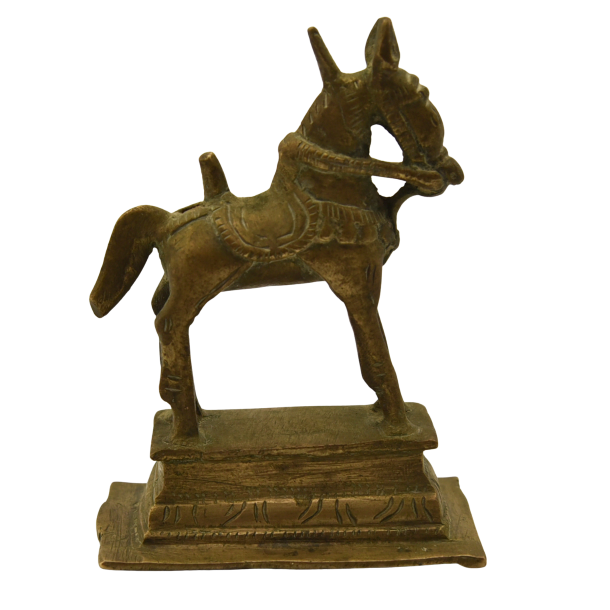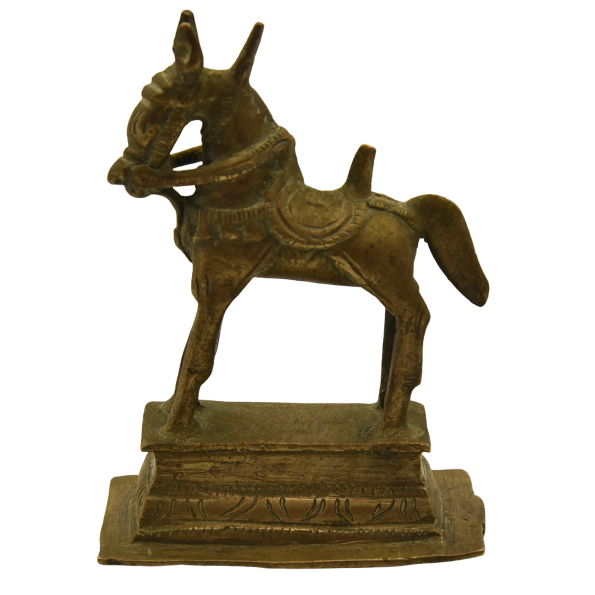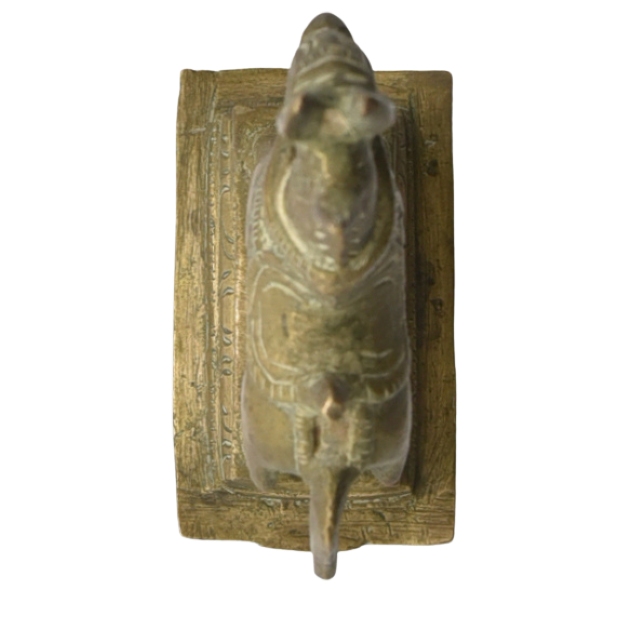 Image 1 of 6
Image 1 of 6

 Image 2 of 6
Image 2 of 6

 Image 3 of 6
Image 3 of 6

 Image 4 of 6
Image 4 of 6

 Image 5 of 6
Image 5 of 6

 Image 6 of 6
Image 6 of 6







Indian hand cast Anchari tribal horse
Date: early to mid 20th century
Geography: India
Culture: Achari
Dimensions: 9.5cm H x 6.5cm W x 4cm D.
Weight 183g
Material: bronze
Condition is good for its age, see photos
This small, hand cast, antique bronze horse, handmade in Karnataka, South India, represents the vahana (vehicle) of Khandoba, a revered regional manifestation of the god Shiva, particularly popular in Maharashtra and Karnataka. Khandoba is depicted as a warrior god, often riding a white horse. The horse symbolises the speed and power with which he defeated the demons Malla and Mani. According to legend, the demon Mani, before his death, repented and offered his white horse to Khandoba, which the god accepted as his mount and faithful companion. This iconography emphasises Khandoba's bravery as a protector.
Date: early to mid 20th century
Geography: India
Culture: Achari
Dimensions: 9.5cm H x 6.5cm W x 4cm D.
Weight 183g
Material: bronze
Condition is good for its age, see photos
This small, hand cast, antique bronze horse, handmade in Karnataka, South India, represents the vahana (vehicle) of Khandoba, a revered regional manifestation of the god Shiva, particularly popular in Maharashtra and Karnataka. Khandoba is depicted as a warrior god, often riding a white horse. The horse symbolises the speed and power with which he defeated the demons Malla and Mani. According to legend, the demon Mani, before his death, repented and offered his white horse to Khandoba, which the god accepted as his mount and faithful companion. This iconography emphasises Khandoba's bravery as a protector.

